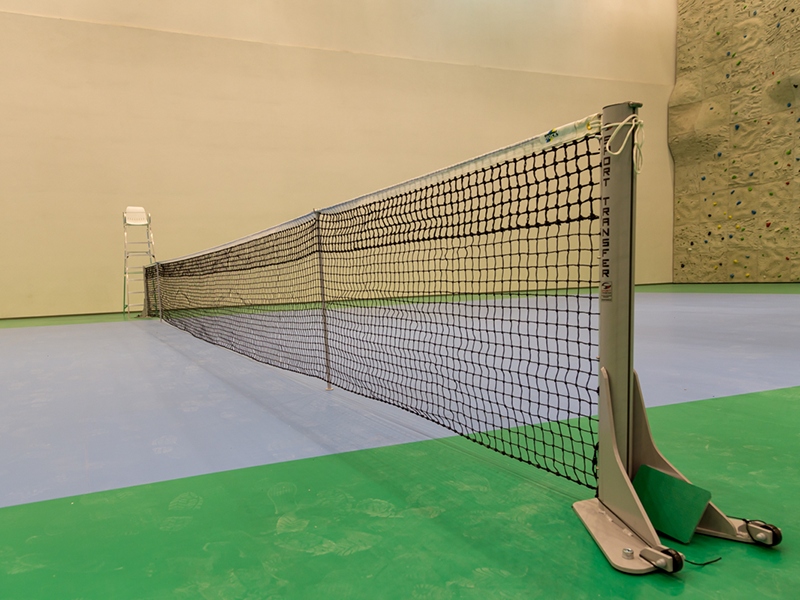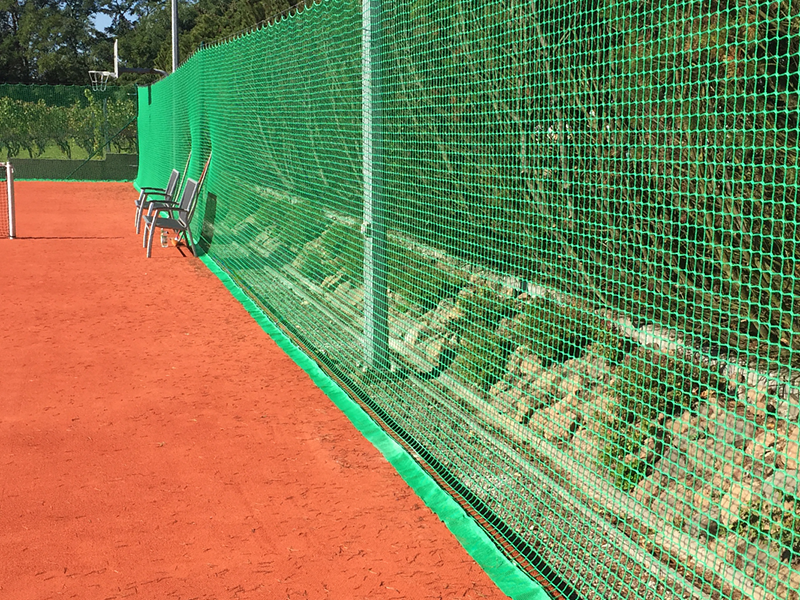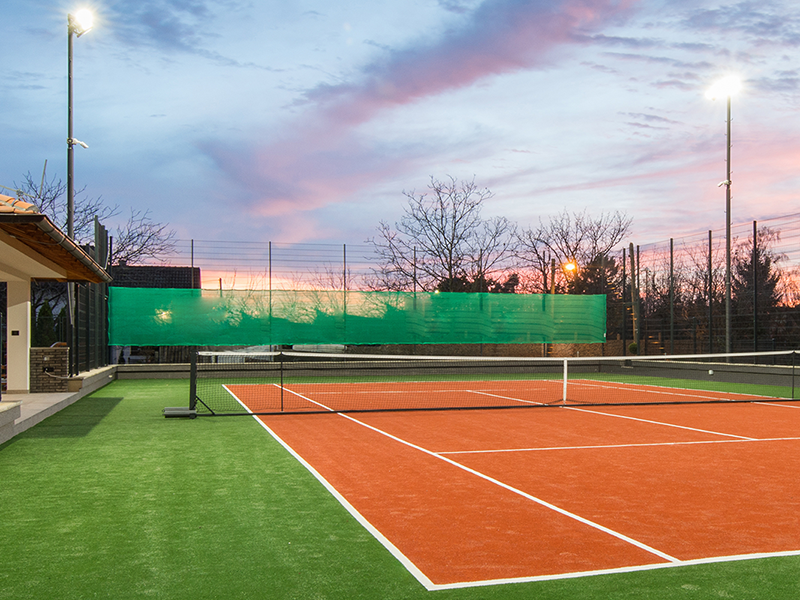TENNIS COURT – WHAT EQUIPMENT DO YOU NEED?
2022-07-29

Tennis is a classic discipline which has aroused great emotions for years. It is currently gaining in popularity due to the success of Polish players. Today, tennis isn’t a sport for elites anymore and the demand for suitably prepared training centres is increasing. Check out how to equip a tennis court.
CLAY TENNIS COURT – DIMENSIONS AND BASIC REQUIREMENTS
The layout of a tennis court is not complicated, but this type of facilities must meet many strict rules. These rules apply to dimensions, among others. A tennis court must be rectangular and have 23.77 m (78 feet) in length. Its width depends on the game type and is 8.23 m (27 feet) for singles games and 10.97 m (36 feet) for doubles games.
The court is divided in half by a line on which the net is mounted. The parallel service lines are located at the distance of 21 feet (6.4 m) on both sides of the net. The central service line runs parallel from the net’s centre. This designates two areas referred to as service boxes.
TENNIS COURT SURFACE
The tennis court surface greatly affects the playing conditions and ball bouncing. The most common court types are clay courts and hard surface courts (coated with acrylic resin, bitumen or concrete). They enable dynamic play – this applies especially to hard surface courts that require the player to have high strength. Games played on clay courts are usually longer. Rotation is very important and inventive players that are able to surprise their opponent have the highest chances to win. Grass is the third type of surface used. The ball moves quicker (it only loses approx. 30% of its speed after bouncing), but bounces off lower on grass. This results in shorter exchanges between players and more common play near the net.
The most common courts in Poland are clay courts (relatively cheap to build, but more expensive to upkeep) hard surface courts.
TENNIS COURT EQUIPMENT – WHAT IS NECESSARY?
Tennis requires a specially prepared playing field, but the equipment needs are not great. It is important however for the court to meet dimension and quality standards.
The net is obviously the most important court element. Its parameters are the same regardless of the surface type. Its dimensions are 12.7 x 1.06 m and it is usually black, making it visible on any type of surface. It is mounted to posts placed on both sides of the central line. It should be hung in a manner ensuring that its top edge is located at the height of 107 cm near the posts and at least 91.4 cm at the court’s centre.
Tennis nets are made from durable and flexible plastics as they are often hit by balls flying at high speeds. A high-strength hit could damage an improperly made net. It is therefore very important to choose the right materials and production technique. Plastics are the most commonly used material – the net itself is made from polyethylene strings which are very durable and resistant to the impact of atmospheric conditions, while its lining is made from a polyester fabric (usually white to ensure the best visibility of the edge). Nets made according to the ITF standard must be used for professional applications.
Tennis posts are used for net mounting. Their main purpose is to adequately stretch the net, which substantially affects the comfort of play. Posts are most often made from very durable corrosion-resistant aluminium. This makes them suitable for indoor and outdoor use. They can have a circular or square cross-section. The stretching mechanism used, which should be solid and reliable, is very important.
Any professional court also has an umpire chair that enables umpiring.
ADDITIONAL TENNIS COURT EQUIPMENT
It is also worth considering to acquire additional tennis court equipment that will improve the court’s functionality and safety. This especially applies to ball fences, i.e. a high fence netting. They prevent hitting the ball outside of the court, thereby reducing the risk of hitting a pedestrian or damaging the surrounding property. They also help prevent long ball searching by keeping the ball inside the field of play. Fence nettings are made from similar materials as tennis nets. This makes them durable and resistant to strong hits.
Tennis court wind screens are also popular accessories that help protect courts against atmospheric conditions. Made from a very fine plastic mesh, they prevent excessive surface insolation and heating, and provide protection against strong winds, also harmonising the background behind the tennis court.
MORE THAN COURT TENNIS
It is also worth taking a look at portable tennis kits that enable you to play without having to anchor the posts in the ground. They consist of posts based on a loaded central beam and net base. They can be used without being anchored in the ground. You can thus transform a gym or field into a tennis court. This equipment is recommended for various sports facilities that prevent you from anchoring the posts’ sleeves in the ground and for individual coaches wanting to conduct training in any location.







